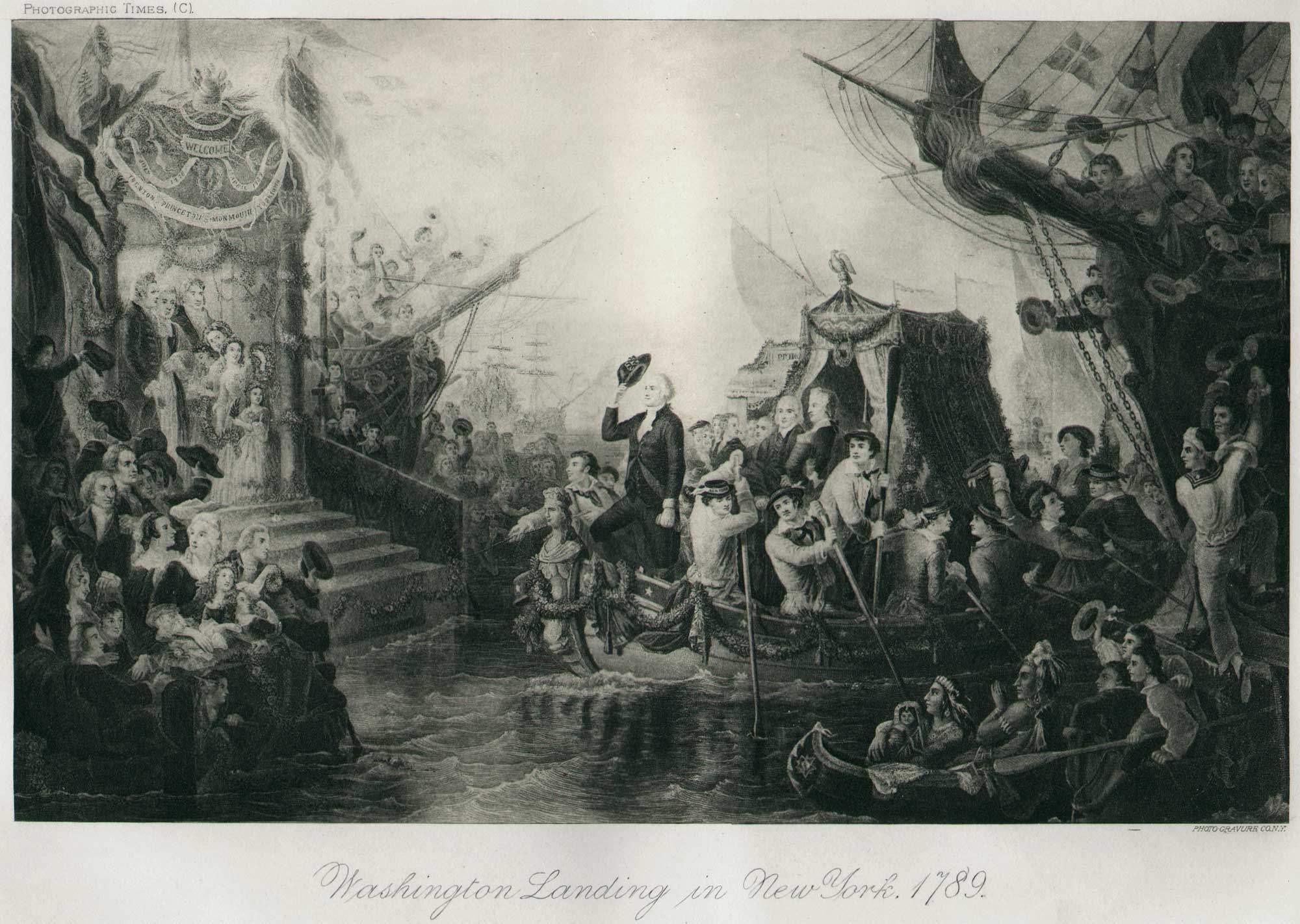
Washington Landing in New York, 1789
Editorial Comment for this plate:
WASHINGTON’S FIRST INAUGURATION.
OUR photo-gravure this week, from an old-time engraving, will be welcomed by every reader of THE PHOTOGRAPHIC TIMES, as a most appropriate and interesting illustration at this time.
In our February 22d issue of the current year, a fac simile of the Washington Calendar was reproduced, which showed the home and some of the haunts of Washington. Miss Skeel’s excellent picture, of the “Newburgh Head-Quarters,” is another illustration of Washington interest.
On the 30th of April, 1789, as every one knows, George Washington was formally administered the oath of office, as First President of the United States. The place was on the balcony of the old Federal Hall, which stood very nearly where the Sub-Treasury Building now stands, facing Broad Street, on Wall. His inauguration was delayed until that date because not enough of the original Colonies had come into the new Union previous to that time.
Washington had set out from his home at Mount Vernon on the 16th of April, and his journey thence was one long ovation. He proceeded first to Alexandria, then through Georgetown to Baltimore, thence to Philadelphia. From Philadelphia he passed over to Trenton, crossing New Jersey, and reaching Elizabethtown, where a committee, with a barge provided by Congress, was awaiting to convey him to New York. This barge was rowed through the Kill von Kull by thirteen of the harbor pilots, and was followed by a long train of boats bearing officers of the new government and other prominent men of the young republic. As the barge drew nearer the Battery, the train of boats grew larger. The war-ships in the harbor fired salutes, while as one writer has said “over the water, to those on shore, came the blare of conches and trumpets, the sound of song and music, and the stirring notes of ‘Stony Point.’ As the little fleet came around the end of Governor’s Island, the shouts were taken up by the crowds that lined the shore or stood in a dense mass about the spot which, bright with flags and bunting, marked the landing place at Murray’s Wharf. There Washington was met by George Clinton and the members of Congress. and escorted by all the troops in the city, to the house made ready for his use.”
Our picture shows us the scene as Washington. approaches the landing, and gives us a good idea of the brilliancy and the enthusiasm of the time. (pp. 203-4)
Known by its title First in Peace, this engraving by John McRae is after the original 1866 oil painting by Henry Brueckner. (born ca. 1825-?)
John McRae: 1816-1892
Born in Scotland, McRae was an historic engraver and print publisher. “Employed by New York publishers, John McRae specialized in engraving portraits and historical scenes from approximately 1845 to 1870. In the latter category, he concentrated primarily upon scenes from early American history and he produced large works of art depicting the marriage of Pochantas, the landing of the Pilgrim Fathers, episodes from the life of George Washington and various battles of the Revolutionary War.” Biography: Find A Grave
The Library Company of Philadelphia holds a fine colored version of the engraving.